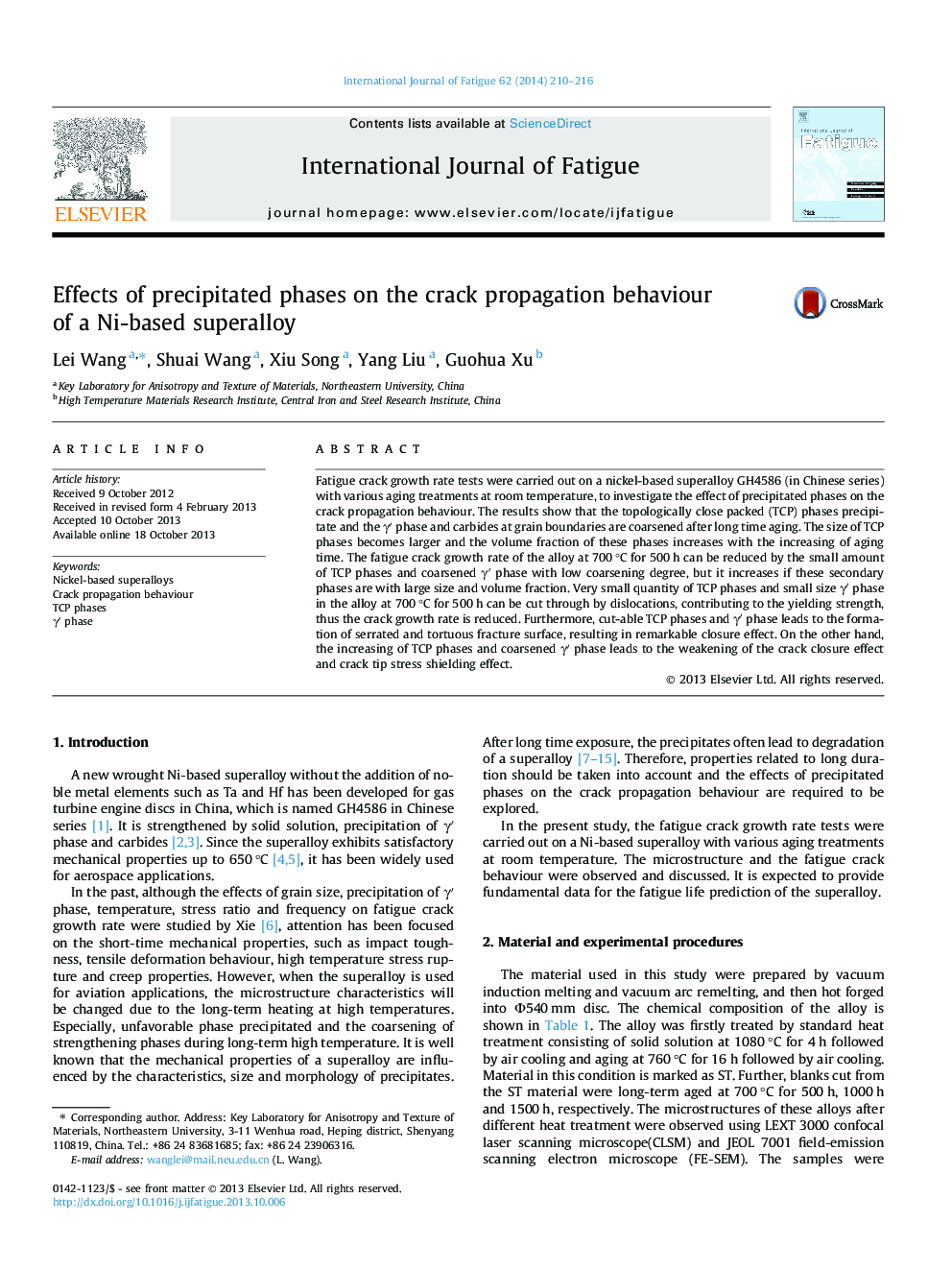| Article ID | Journal | Published Year | Pages | File Type |
|---|---|---|---|---|
| 7172340 | International Journal of Fatigue | 2014 | 7 Pages |
Abstract
Fatigue crack growth rate tests were carried out on a nickel-based superalloy GH4586 (in Chinese series) with various aging treatments at room temperature, to investigate the effect of precipitated phases on the crack propagation behaviour. The results show that the topologically close packed (TCP) phases precipitate and the γⲠphase and carbides at grain boundaries are coarsened after long time aging. The size of TCP phases becomes larger and the volume fraction of these phases increases with the increasing of aging time. The fatigue crack growth rate of the alloy at 700 °C for 500 h can be reduced by the small amount of TCP phases and coarsened γⲠphase with low coarsening degree, but it increases if these secondary phases are with large size and volume fraction. Very small quantity of TCP phases and small size γⲠphase in the alloy at 700 °C for 500 h can be cut through by dislocations, contributing to the yielding strength, thus the crack growth rate is reduced. Furthermore, cut-able TCP phases and γⲠphase leads to the formation of serrated and tortuous fracture surface, resulting in remarkable closure effect. On the other hand, the increasing of TCP phases and coarsened γⲠphase leads to the weakening of the crack closure effect and crack tip stress shielding effect.
Related Topics
Physical Sciences and Engineering
Engineering
Mechanical Engineering
Authors
Lei Wang, Shuai Wang, Xiu Song, Yang Liu, Guohua Xu,
